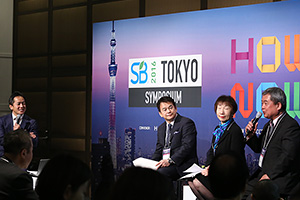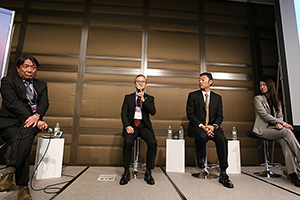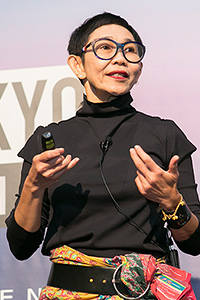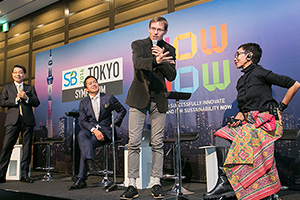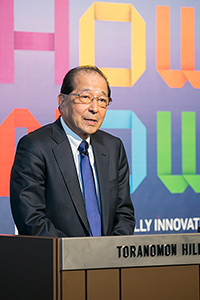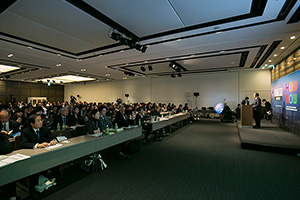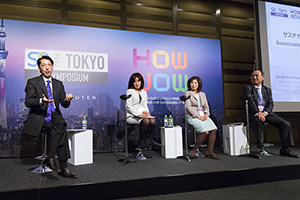Mr. Toshio Arima, Board Member, United Nations Global Compact / Chairman of the Board, Global Compact Network Japan / Chairperson, Japan Platform /Executive Advisor, Fuji Xerox Co. Ltd. presented this special keynote. He said: “You’ve just seen a TV commercial made in 1970 by Fuji Xerox entitled ‘From Grind to Beauty’. We came up with this phrase to suggest ‘make the sky beautiful again and make business beautiful. Stop and think.’ I’d been working at Fuji Xerox for three years. Japan was covered in photochemical smog and chemical pollution was everywhere. It was a huge problem. The TV advert was not received well by our company’s marketing section, and many customers didn’t understand what our advert was saying. On the other hand, the younger generation responded very positively. After this advert was aired university students ranked Fuji Xerox as the most attractive corporation to work for. I’m not a branding expert but I believe this advert established Fuji Xerox’ brand identity. The ideas and philosophies expressed in this advert continue to this day in our corporation. In that way, I think I can say Fuji Xerox is one of the sustainable brands.”
“I think sustainable brands require four conditions: 1. The brand message must correspond with fundamental expectations and society’s issues; 2. The brand message must embody the actuality of what the business does; 3. The business is actually executing the brand message; and 4. The brand message, direction and process are integrated. A corporation called Fuji Xerox: what is it for? Many managers would say its purpose is to make good products, give good service, make profits, employ people, pay tax, and deliver dividends. I disagree. Xerox’ founder Joseph Wilson said: “Our business goal is to achieve better understanding among men through better communications.” “I agree. Its contribution to society must be the major reason for a corporation to exist.”
“For example, corporations must consider how to respond to the SDGs - Sustainable Development Goals - agreed on 15th September 2015 by the United Nations, and must also consider how to respond to the goals society requires. If you think of things in that way you will be close to becoming a sustainable brand. However, when you define your brand message your business actually has to act on it. In Fuji Xerox we often said ‘match your words with your actions’ and tested our plans amongst ourselves and checked its effectiveness. Only when we were confident did we deliver those messages to our customers: it’s no good if you can only talk, but not execute.”
“When you plan your sustainable brand message you must also strengthen your ability to change your company’s business model and build a package on top of it. You must carry through your efforts to solve sustainability issues and social problems right through your business process. Your supply chain has to be considered, too. For instance, our Shenzen factory reduced supplier-caused production line stops from 100 in 2007 to 5 in 2014. CSR-based materials sourcing contributes to reduced costs and increases employee retention: the factory reduced its employee turnover rates to one third of the Shenzen average.”
“In conclusion, the key to sustainable brand promotion is to chase three targets simultaneously: economic, human, and social. A corporation with high scores in all three areas can justly claim to be of high quality, and that is where you find innovation.”

